Corporate social responsibility (CSR), typically the purview of the PR department, usually focuses on company reputation and positive press coverage for the company and its CEO being good corporate citizens. Most tend to think about CSR when it is too late, for example after we have made a mistake that has had a negative impact on our communities, our employees, and/or our suppliers. That’s reactive. Some try to get out in front of a future problem and proactively see CSR as a get-out-of-jail-free card that they can pull out when they do something that negatively impacts stakeholders to show what good, responsible business leaders they usually are. That’s still reactive.
We need to shift our thinking to managing CSR proactively, and to do that we need to start thinking strategically about CSR in terms of how our activities and relationships add value to our relationships with different stakeholders – suppliers, communities, employees, and the planet – so that we responsibly sell more products and/or reduce costs and keep doing good things for all our stakeholder over time – sustainable sustainability, as I like to call it.

Strategic CSR
If we agree on the need for CSR to be proactively and strategically developed and implemented to continuously impact the fundamentals of our business model (increasing sales and profits while adding value and lower operating costs), then shouldn’t the CEO be personally overseeing the company’s CSR effort? And because it involves creating and sustaining value not just for customers, but for every entity that has a stake in the success – or failure – of the business enterprise, shouldn’t we put the people in our organization with the best experience of creating, communicating, and delivering customer value in charge of creating, communicating, and delivering stakeholder value – the marketing and sales department?
As marketers and salespeople, we always start with understanding customer needs, creating products and services to deliver on those needs, and then developing the communication and sales strategy that prompts people to act because we ensure the brand proposition is meaningful to them, deliverable by the benefits of the brand, and defendable versus any viable alternative. That’s marketing. Every professional marketing and sales manager knows how to do that.
Stakeholder Theory
Professor Edward Freeman from the University of Virginia developed what he called the Stakeholder Theory. Freeman made the convincing point that we need to evolve our thinking beyond just focusing on delivering customer value and expand that value creation to each and every ‘group or individual who can affect or is affected by the achievement of the organization’s objectives.’

Can marketing impact stakeholders?
We developed a new segmentation model several years ago called Human Centric Segmentation. It overcame the limitations of demographic/geographic segmentation leftover from the dark ages and the narrow focus of psychographic segmentation that was mostly category-behavior driven. Using narrow category usage segmentation explains why Coca-Cola Company was ten years late on developing an energy drink like Red Bull, or on the positive side, how Jeep Cherokee looked beyond four-wheel-drive truck buyers to make minivans obsolete for suburban moms replacing them with SUVs.

Utilizing ‘big data,’ we looked at human behavior across hundreds of activities and product categories and the consumption motivations of thousands of brand purchases to get past what people merely say they care about to what they actually do care about…and why. That’s a state-of-the-art brand strategy and integrated marketing communications driven by in-depth knowledge and understanding of customers as human beings with both functional and emotional needs that vary as they move through their daily lives. Here is an example of the US human-centric segmentation of the 18 years and older population broken into E (adult, no kids), P (parents), and EN (empty nesters and seniors).
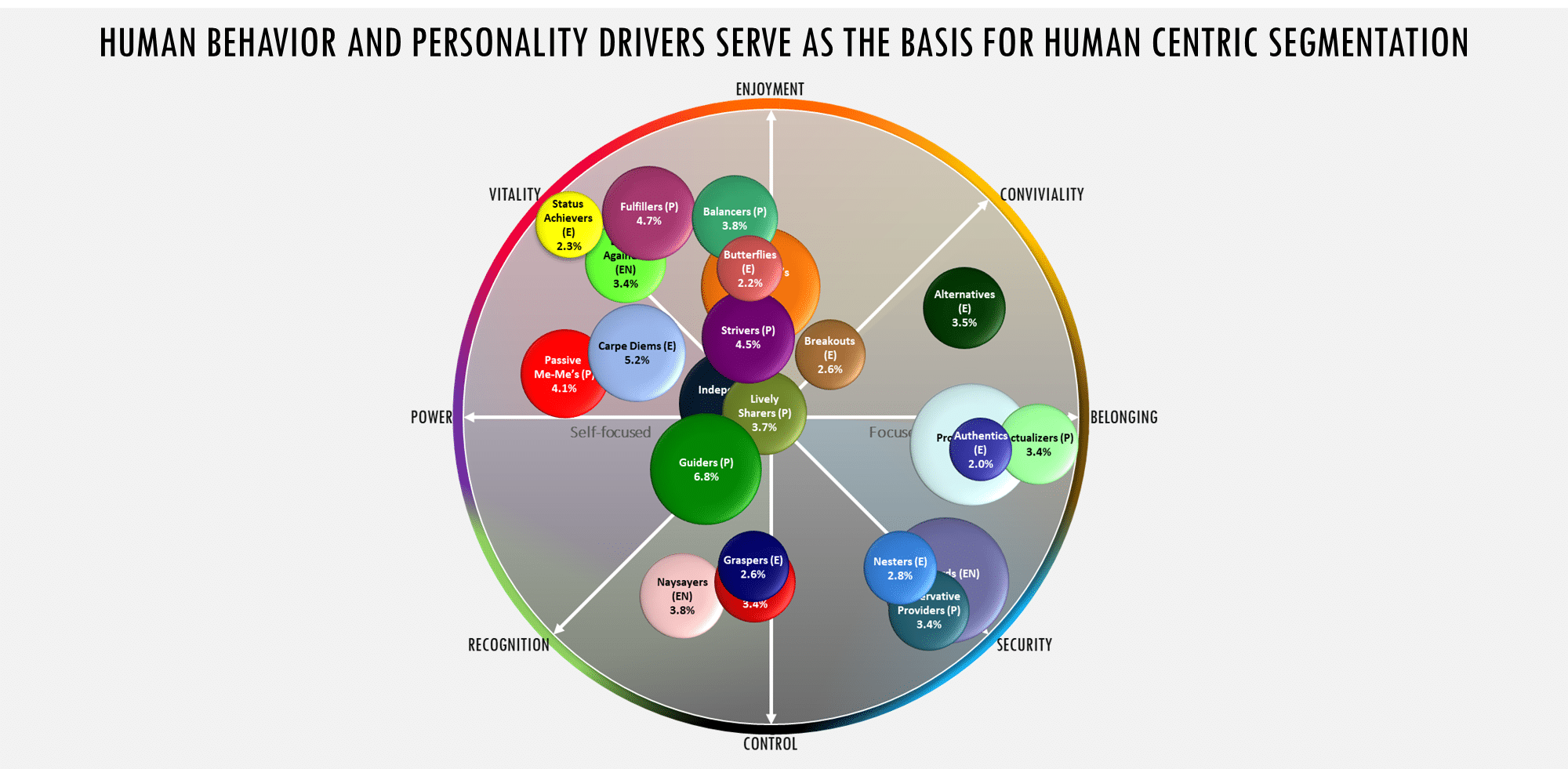
Business Leaders Segments
Business leaders are people, too. Based on their personal behavior, leadership style, decision-making motivations, and other factors, we have expanded this human-centric segmentation into a business leader segmentation.
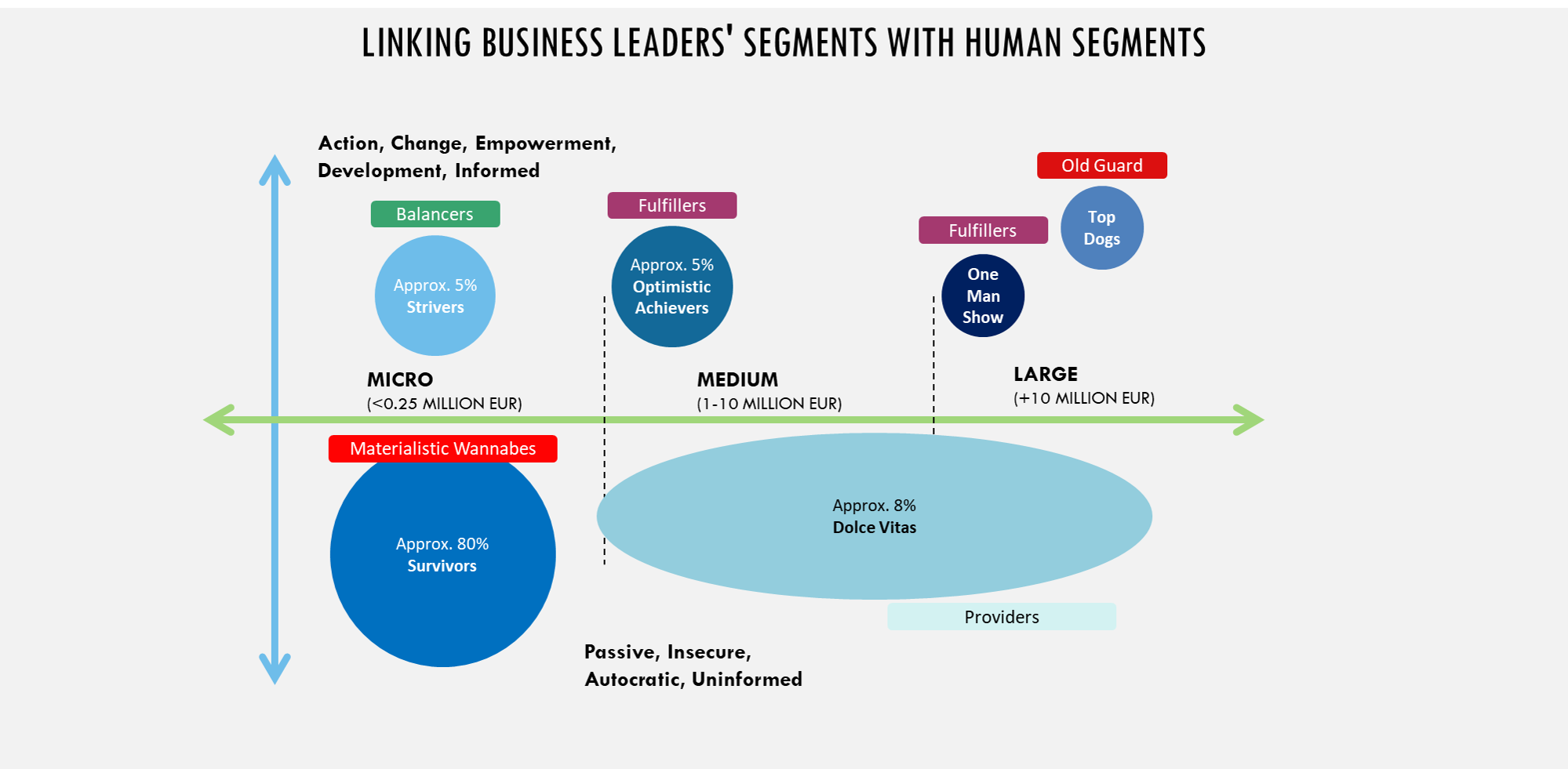
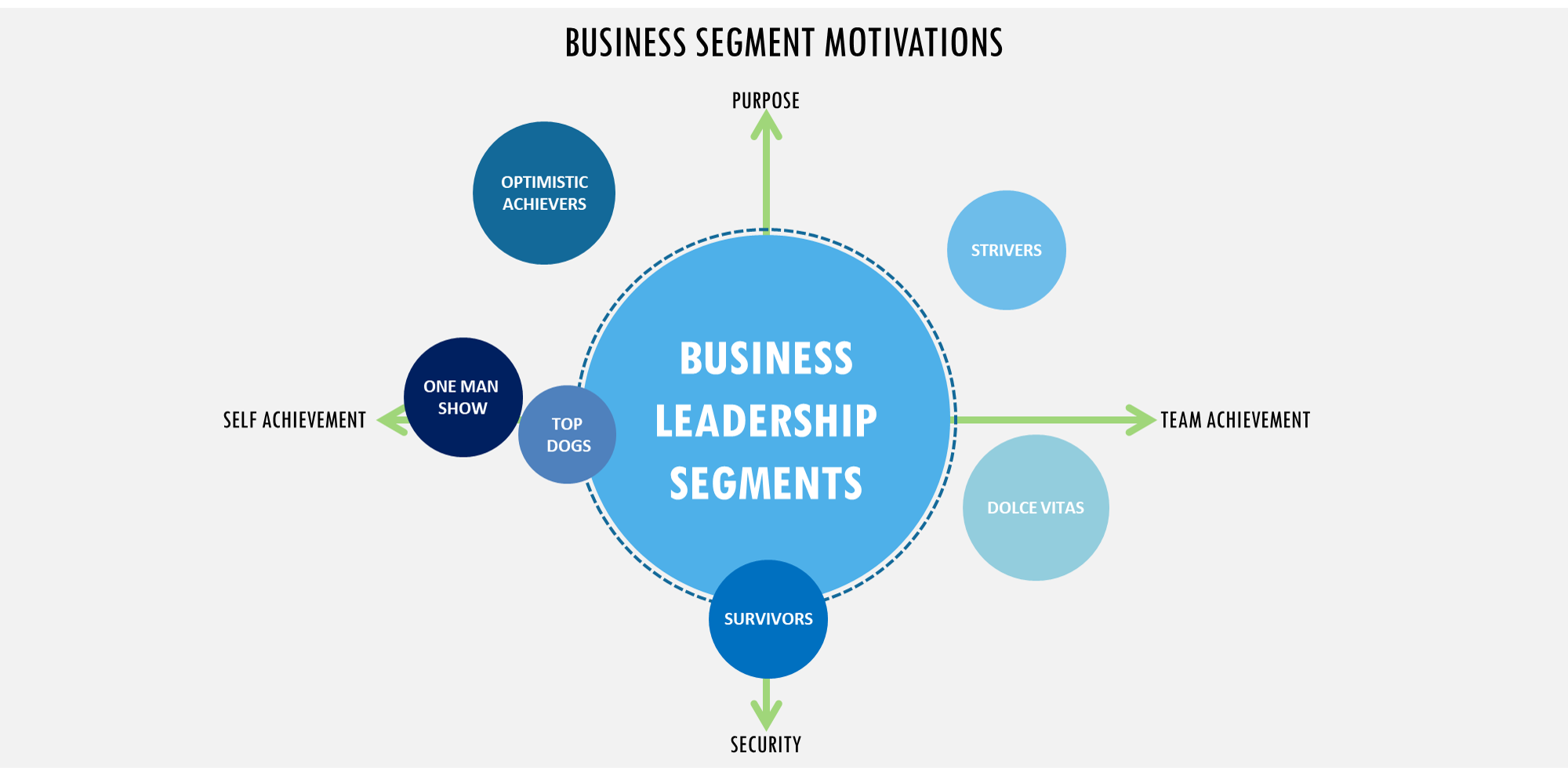
Maslow’s Hierarchy of Needs

How else do you explain some of the most successful business leaders of our time devoting themselves to purposeful endeavors like Jeff Bezo committing $10M to fight climate change, or Bill Gates spending a large portion of his personal wealth to fight transmissible diseases? They are not retreating to a mountaintop in Tibet to ponder the meaning of life and achieve self-actualization; they want to put a ding in the universe, as Steve Jobs from Apple once famously proclaimed. We all want to make a difference. It is no longer enough to simply pursue making lots of money to achieve personal wealth.
That’s nice, but we can do more along the way. We want to make a positive impact. You, your employees, your suppliers, and the people who live in the communities where you operate your business want to be more and do more, not just for themselves but for each other. If there is a silver lining to the dark COVID cloud hanging over us is that it has woken us up to the interconnected needs of those around us in a way that we hadn’t realized before on such a scale. We have come to realize through both pain and joy that our suppliers, our employees, the supporting institutions in our communities, AND our customers are all stakeholders who can make or break our business today and tomorrow.
The biggest stakeholder of all – the planet – is in desperate need of our attention and care to avoid a far bigger crisis than anything we have experienced to date.
Brand Architecture: Motivational Hierarchy
My marketing mentor in my early years, Sergio Zyman, the former Chief Marketing Officer of Coca-Cola developed a motivational hierarchy as a brand architecture model that we have adapted and modified over the years at Garrison Group.

We have tweaked and refined this motivational architecture to reflect a deeper understanding of customers as human beings with both functional needs (need states) and emotional needs (lifestyle tension points).

As marketers and salespeople, we can take that deeper understanding of the crucial importance of what motivates customers, apply it to the other stakeholders, and then integrate it into our overall brand strategy so that the combined effect of all those stakeholders that are critical to the success of our business and brand are aligned and helping to create exponential brand value. The effect of employees, suppliers, and communities all contributing to the creation, delivering, and communication of brand value creates what we call a brand halo that sustains brand value for customers.
Rather than believing you can lead via a command and control model, you need to realize your control diminishes as you extend out from the brand strategy so you need to adopt a lead and influence leadership model which is what marketing and sales very much understand. You can’t command and control customers to buy your brand any more than you can command and control suppliers, or even less, community leaders. You need to understand what motivates them and convince them that their interests and yours are aligned.

Avon’s Brand Promise
Let’s consider AVON – The Company for Women, as they proudly proclaim. Building and expanding on that brand promise of a company for women and empowerment is a powerful idea. Let’s look at how that brand idea is meaningful to just three of their stakeholders – customers, sales force, and communities.
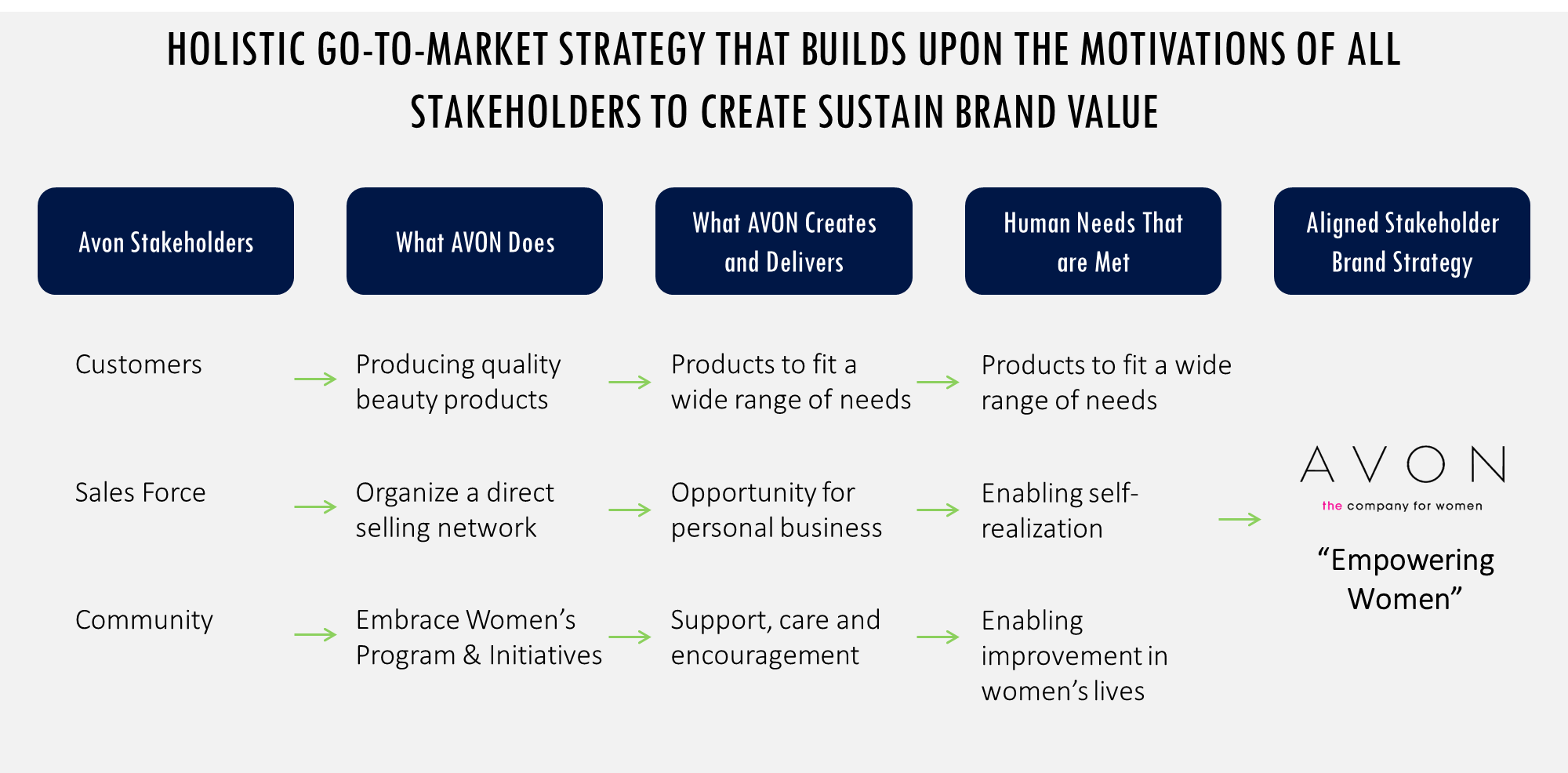
Instead of having the AVON PR department drive the CSR strategy, Marketing Director for AVON in Russia, Elena Degtyareva came to the realization during the 2008/09 financial crisis that marketing and sales has the knowhow and experience to turn women’s empowerment into a comprehensive and integrated go-to-market strategy targeting the different stakeholders with a comprehensive CSR extension of the core AVON brand strategy that integrated community and society activities that involved multiple stakeholders all under the concept of women making their move.

The Evolving Dynamics of Leadership
Did you know that the Chinese symbol for crisis is the same for opportunity? Remember when President Obama repeated the phrase, a crisis is a terrible thing to waste. Both are true and relevant in the crisis we find ourselves in globally today. But as we learn to run our businesses on Zoom to an ever-increasing extent and as we discover new ways to get things done, maybe now is the time to consider developing a much more holistic action plan to address what drives our business through a higher level of business leadership integrity that we adopt and rigorously adhere to. Linda Fisher Thornton in her book 7 Lenses challenges business leaders to expand their leadership role and focus.
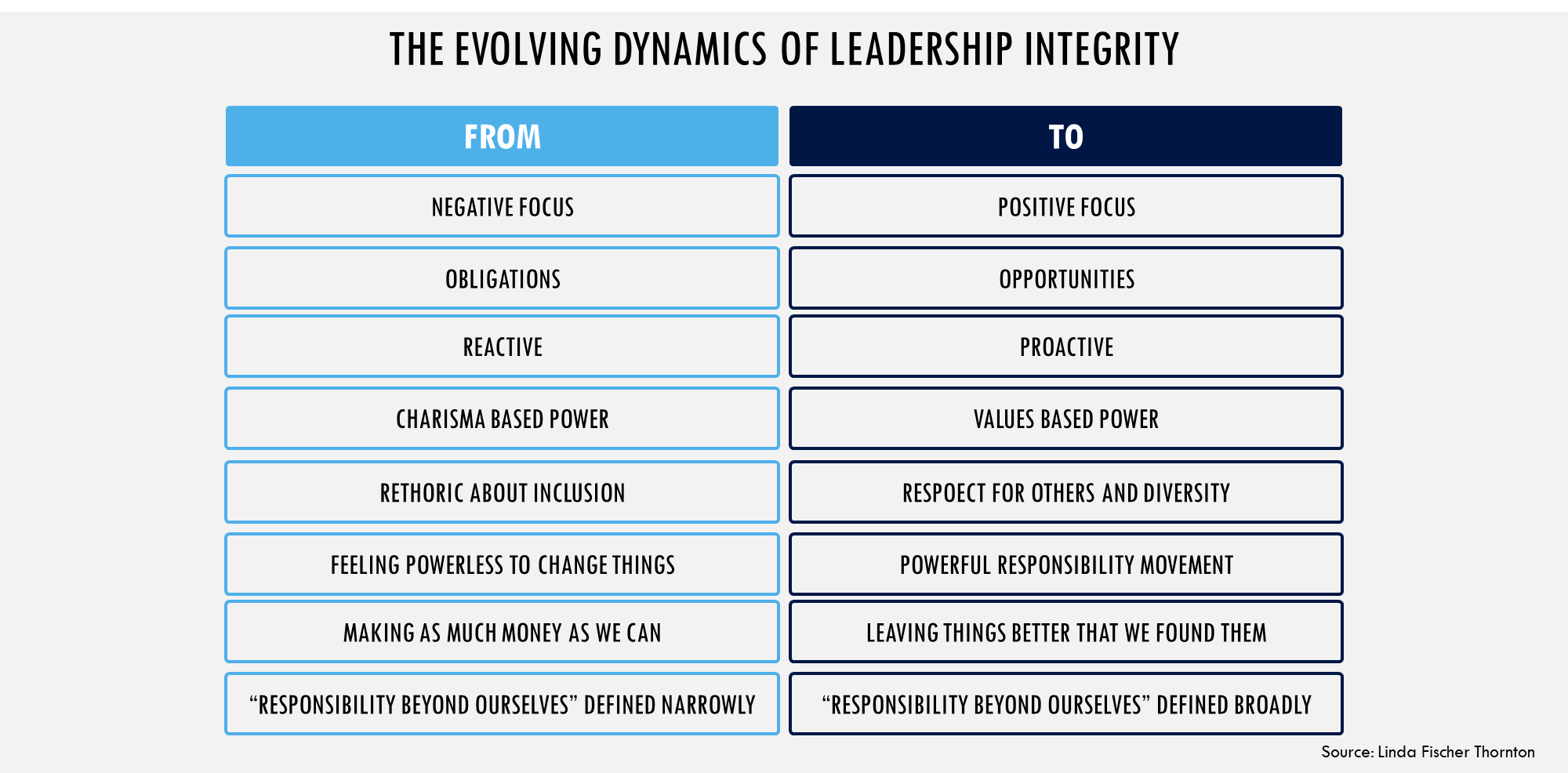
Now, with so much change and fear of the unknown, new business leaders are emerging and in many cases filling the gap left open from political leadership in many markets around the world. Now is the right time to finally move from yesterday’s concept of brand management and the unilateral focus on creating and delivering customer value to deliver shareholder value, to stakeholder management and how we can add value not just to our customers, but beyond to all the others that make our shared enterprise work in communities that are desperately seeking leadership. And if we are smart about it, we can create even more customer value over the long term. Which is not a bad thing because as the saying goes, all ships rise with the tide.



